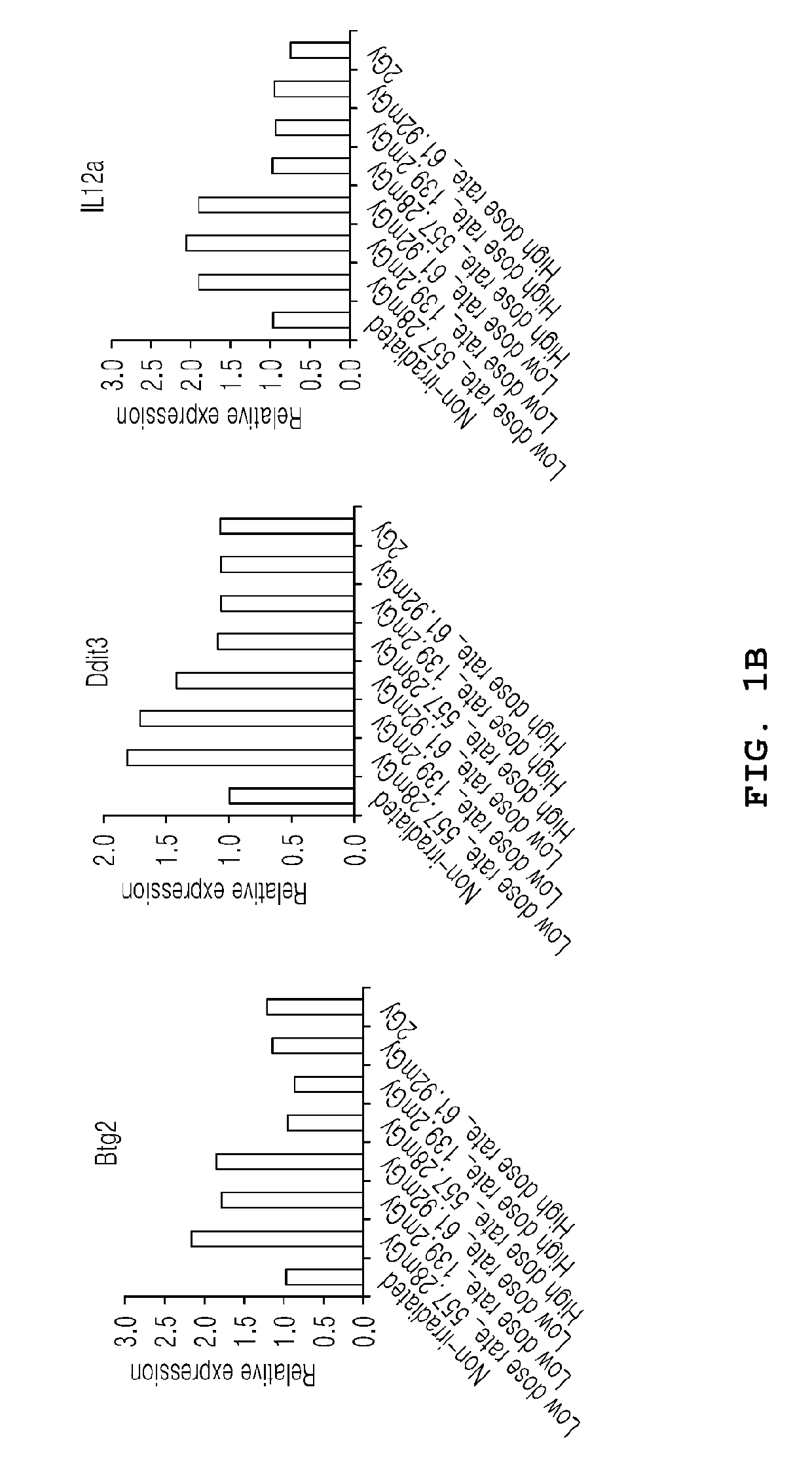Apoptosis regulatory gene detected in irradiated-thymic lymphoma cell and method for detecting same
a technology of thymic lymphoma and apoptosis regulation gene, which is applied in the field of apoptosis regulatory gene detected in irradiated thymic lymphoma cells, can solve problems such as damage to dna
- Summary
- Abstract
- Description
- Claims
- Application Information
AI Technical Summary
Benefits of technology
Problems solved by technology
Method used
Image
Examples
example 2
Screening of Apoptosis Regulatory Gene of Irradiated Mouse Thymic Lymphoma Cells and Measurement of RNA-level Expression Thereof
2-1 Screening of Apoptosis Regulatory Gene of Irradiated Mouse Thymic Lymphoma Cells
[0033]In order to screen the apoptosis regulatory gene of irradiated cells, a microarray was performed.
[0034]Total RNA of the low-dose-rate low-level-irradiated cell group of Example 1 was extracted and labeled with Cyanine3. A microarray chip in which all the genes of total DNA were arranged was prepared, and the Cyanine3-labeled total RNA was allowed to react therein. The signal in response to the above reaction was analyzed and the extent of expression of each RNA was verified.
[0035]Furthermore, the high-dose-rate low-level-irradiated cell group and the high-dose-rate high-level-irradiated cell group were subjected to microarray in the same manner as above.
[0036]Based on the results of microarray, genes, the expression of which was increased two times or more in the low-d...
example 3
Measurement of Expression of Apoptosis Regulatory Protein of Irradiated Mouse Thymic Lymphoma Cells
[0044]In order to measure protein expression of the apoptosis regulatory gene detected in Example 2-2, Western blotting was performed.
[0045]A cell lysis buffer was prepared by mixing 150 mM NaCl, 1% Triton X0199, 0.1% SDS, 0.5% sodium deoxycholate, 50 mM Tris (pH 7.4) and 1 mM EDTA. Also, the prepared cell lysis buffer was added with a protease inhibitor (Thermo Scientific, USA) at a concentration of 1% based on the total concentration of the solution.
[0046]The low-dose-rate low-level-irradiated cell group of Example 1 was mixed with the cell lysis buffer, and thus the cells were lysed to give a protein sample. Western blotting was performed using the protein sample, and the amount of protein expression was measured. Upon Western blotting, an antibody (1:200, Abcam, Cambridge, Mass.) for detecting Ddit3 and Tnfrsf19 and an antibody (1:200, OriGene) for detecting Nod1, Bmf, and Bik were...
PUM
| Property | Measurement | Unit |
|---|---|---|
| disease resistance | aaaaa | aaaaa |
| concentration | aaaaa | aaaaa |
| width | aaaaa | aaaaa |
Abstract
Description
Claims
Application Information
 Login to View More
Login to View More - R&D
- Intellectual Property
- Life Sciences
- Materials
- Tech Scout
- Unparalleled Data Quality
- Higher Quality Content
- 60% Fewer Hallucinations
Browse by: Latest US Patents, China's latest patents, Technical Efficacy Thesaurus, Application Domain, Technology Topic, Popular Technical Reports.
© 2025 PatSnap. All rights reserved.Legal|Privacy policy|Modern Slavery Act Transparency Statement|Sitemap|About US| Contact US: help@patsnap.com



